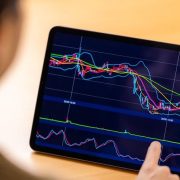Algorithmic trading, also known as algo-trading, has become increasingly popular among traders and investors in recent years. This type of trading involves using computer algorithms to make decisions about buying and selling securities in financial markets. While algo-trading has its benefits, it also poses some risks to market stability.
How Algorithmic Trading Works
Algorithmic trading involves using computer programs to analyze market data and execute trades based on pre-set rules and criteria. These algorithms can be designed to take into account a wide range of factors, such as market trends, news events, and economic indicators.
One of the main advantages of algo-trading is its speed and efficiency. Algorithms can process vast amounts of data much faster than humans, allowing traders to make split-second decisions and take advantage of market opportunities before they disappear.
Implications on Market Stability
While algo-trading has its benefits, it also poses some risks to market stability. One of the main concerns is that algorithms can amplify market volatility. For example, if a large number of algo-trading programs all start buying or selling a particular security at the same time, this can create a sudden surge or drop in the price of that security.
Another concern is that algo-trading can contribute to market fragmentation. As more traders and investors rely on algorithms to make decisions, the market becomes more fragmented and less transparent. This can make it harder for regulators to monitor and control market activity, potentially leading to increased market instability.
Regulatory Responses to Algorithmic Trading
Regulators around the world have recognized the potential risks posed by algo-trading and have taken steps to address them. For example, in the United States, the Securities and Exchange Commission (SEC) has implemented rules requiring firms that engage in high-frequency trading to use risk controls to prevent errors and ensure that their algorithms do not cause market disruptions.
In Europe, the Markets in Financial Instruments Directive II (MiFID II) includes provisions aimed at increasing transparency in the market and reducing the risk of market fragmentation caused by algorithmic trading.
Algorithmic trading has become an important part of the financial markets, offering traders and investors a range of benefits such as speed and efficiency. However, it also poses some risks to market stability, particularly in terms of amplifying volatility and contributing to market fragmentation. Regulators have recognized these risks and have taken steps to address them, but it remains to be seen whether these measures will be effective in ensuring the stability and integrity of the financial markets in the long run.










Comments